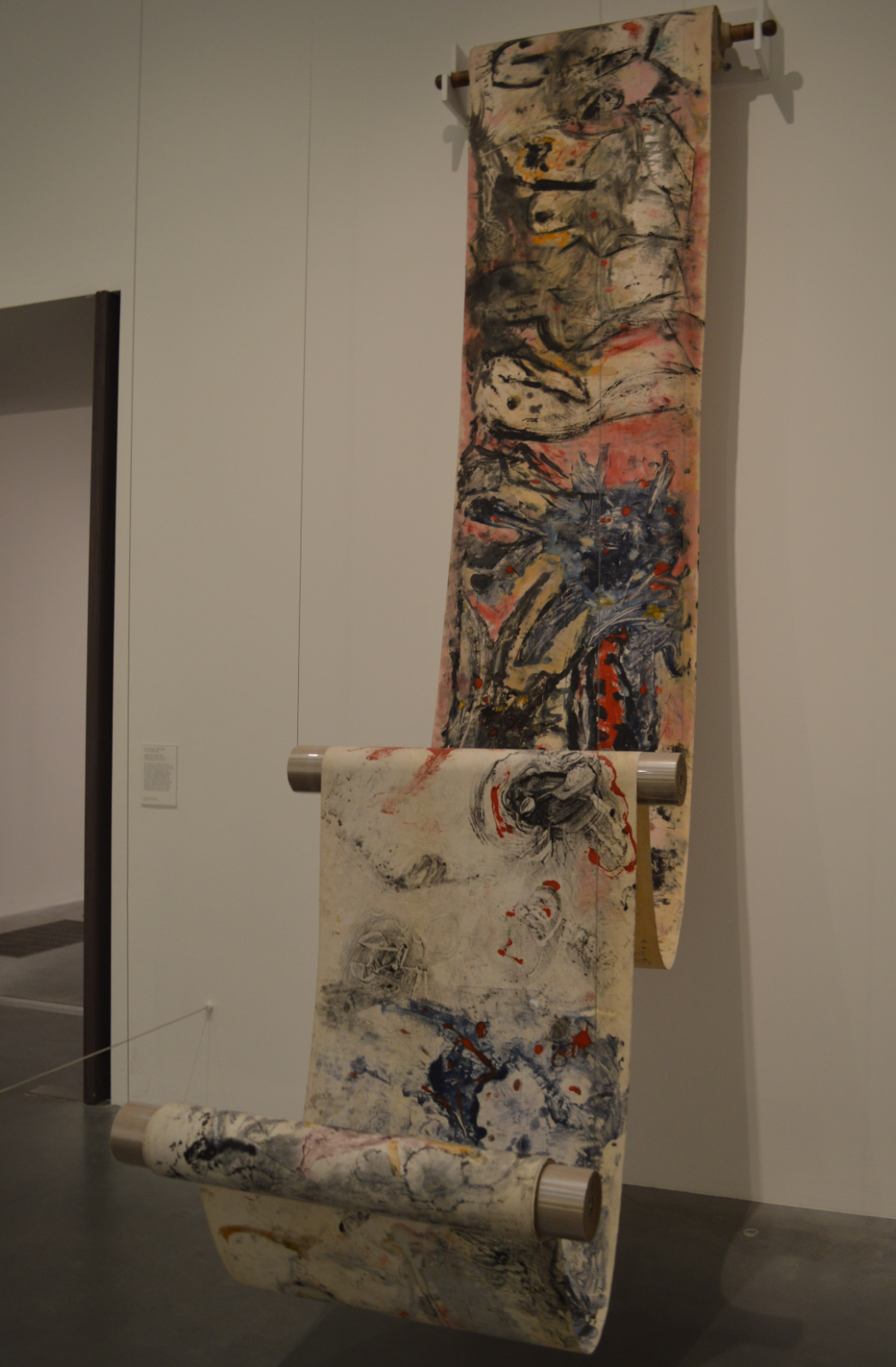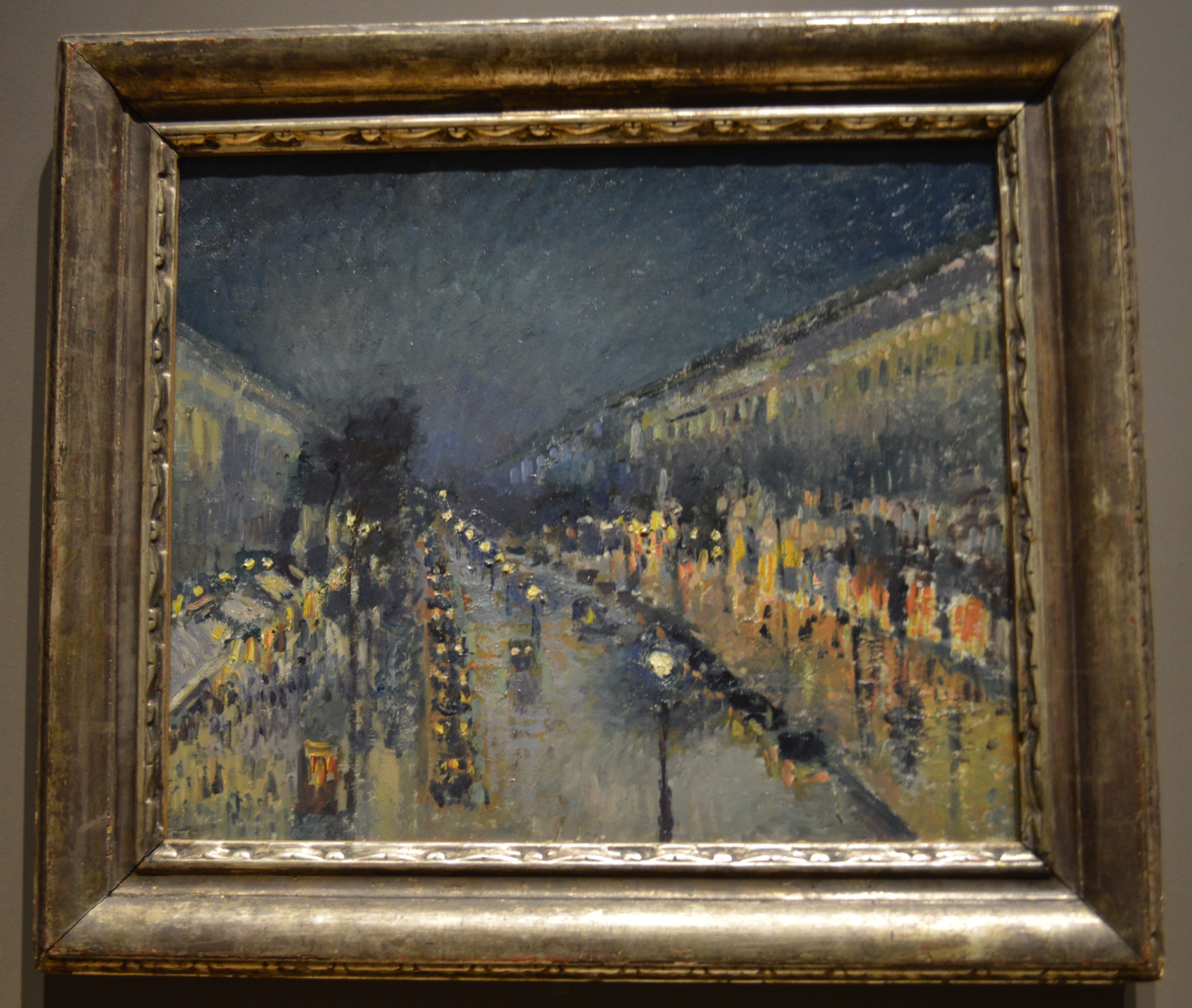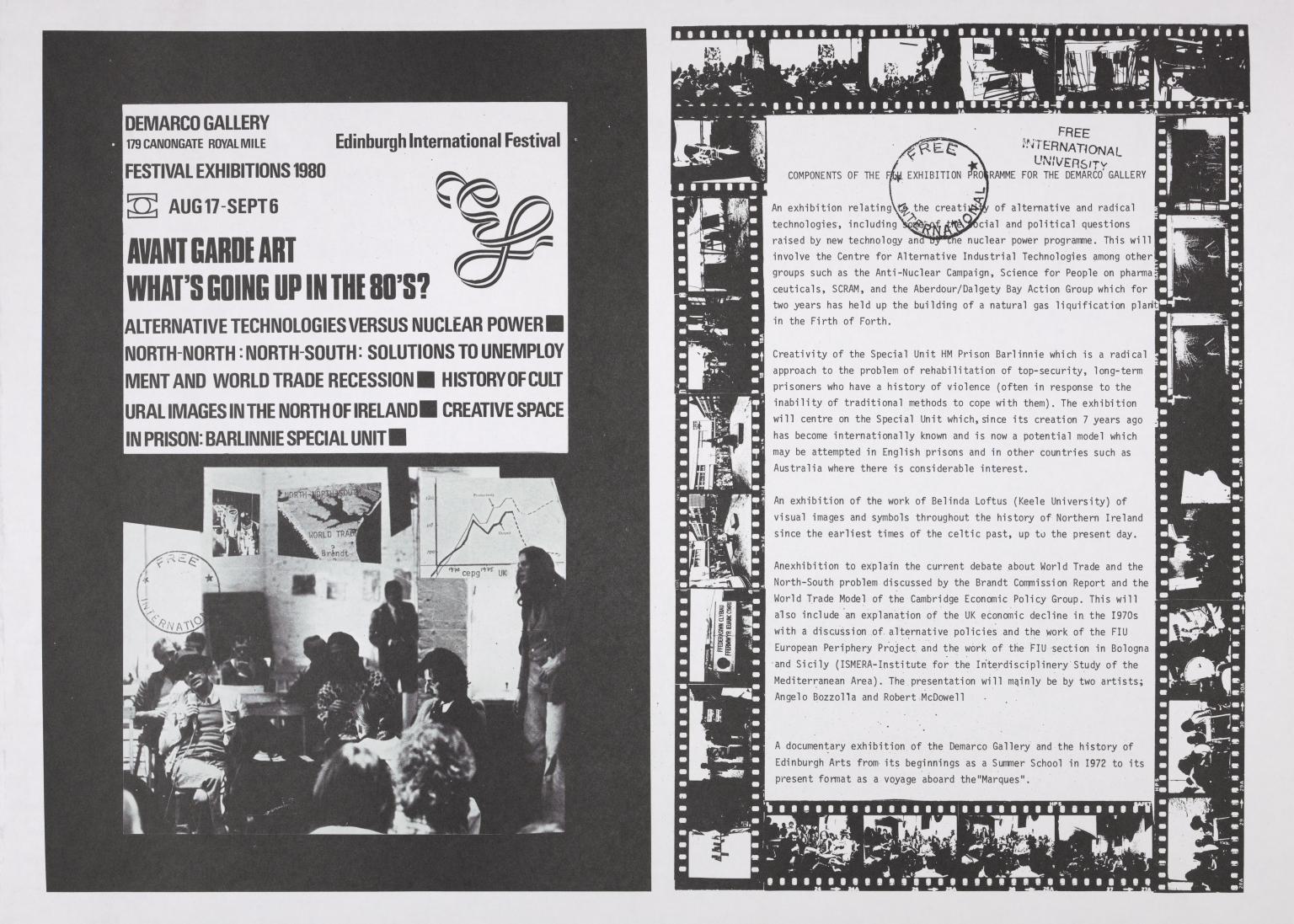Avant Garde
From Londonhua WIKI
Contents
- 1 Avant-Garde in Modern Art
- 2 Guide to Avantgardists in London
- 3 Conclusion
- 4 References
- 5 External Links
Avant-Garde in Modern Art
by Sofia Reyes
Abstract
I am aiming to inform readers about the art avant-garde. Art is a really important part of my life since I was really little. I attended art classes since I was 6 years old. I have always like to express myself in Art. With all my background in art I never fully understood what this type of art meant. My goal is for the readers to understand what Avant-Garde is and who are some of the most famous artists in this movements. At the end, I will provide a guide to Avant-Garde Art in London. Many of this works are within huge art galleries such as National Art Gallery and Tate Modern. Some are really famous work of art and some may go unnoticed but they all impacted the world being avant-garde.
Introduction
The term avant-garde comes from the military usage and means 'advance guard'. Small groups of particularly bold and attentive soldiers explore the terrain and investigate the conditions. In art, the term 'avant-garde' denotes individuals and/or small groups that in their works and actions, open up new, unexplored territory. The 'avant-gardists' can develop the capacity of impact with particular efficiency. At the center of exhibitions the unparallel energy of the international 'avant-garde' on the threshold of the new century. With Impressionism and Post-Impressionism in London and Paris, Constructivism in Russia and with individual artists such as Edvard Munch and Marcel Duchamp, they have an unprecedented potential of brilliant, creative personalities.[1]
Avant-garde is originally a French term, meaning in English vanguard or advance guard (the part of an army that goes forward ahead of the rest). It first appeared with reference to art in France in the first half of the nineteenth century and is usually credited to the influential thinker Henri de Saint-Simon, one of the forerunners of socialism. He believed in the social power of the arts and saw artists, alongside scientists and industrialists, as the leaders of a new society. In 1825 he wrote:
- We artists will serve you as an avant-garde, the power of the arts is most immediate: when we want to
- spread new ideas we inscribe them on marble or canvas. What a magnificent destiny
- for the arts is that of exercising a positive power over society, a true priestly function
- and of marching in the van [i.e. vanguard] of all the intellectual faculties!
- for the arts is that of exercising a positive power over society, a true priestly function
- spread new ideas we inscribe them on marble or canvas. What a magnificent destiny
- We artists will serve you as an avant-garde, the power of the arts is most immediate: when we want to
|
Avant Garde Art: What’s Going Up in the 80’s?’. Edinburgh International Festival, The Richard Demarco Gallery 1980 | |
| Info |
Joseph Beuys Tate / National Galleries of Scotland © DACS, 2017 |
|---|---|
History
The Beginning
Avant-garde art can be said to begin in the 1850s with the realism of Gustave Courbet, who was strongly influenced by early socialist ideas. This was followed by the successive movements of modern art, and the term avant-garde is more or less synonymous with modern. The Period 1851 to 1929 witnessed the rise of the major European avant-garde/modern groups: the Realists, Impressionists, Post-Impressionists, Symbolists, Cubists, and Surrealists. In the time period, it was also a time of rapid social, economic, and political change, encompassing a revolution in communication systems and technology, and an unprecedented growth in the availability of printed images. [2] Some avant-garde movements such as Cubism, for example, have focused mainly on innovations of form, others such as Futurism, De Stijl or surrealism have had strong social programs.
The Development
The Protagonists of this Period (Avantgardists)
The protagonists of this tendency were united by the urge to break free from tradition and win social acceptance for a new art. Most of them produced their works of art during the first third of the twentieth century until fascism and Stalinism crushed their movements in Europe. [3] [4]
Impressionism
Impressionism started in the early 1870’s as an interval of time between Realism and Symbolism. Artists were detached from objectivity and based their ideals upon sensation. Ideas such as expression of sensations derived from nature without any preconceived knowledge of nature. Many artists used short brush strokes and unblended vivid colors focusing on the effects of light. This style gave many works of art in this period a sense of spontaneity and modernity. [5]
Impressionism was founded by revolutionary artists such as starting with Claude Monet, Camille Pissarro, and Pierre Renoir, among others. Accused by critics as sketches or impressions and not finished art this artist painted the appearance of reality. Impressionist was too fond of free imagination and rejected objectivity and intellectualism.
Claude Monet
It can be said that Monet is the father of Impressionism with his new technique of immediate perception. We can admire this technique in a painting in the Worcester Art Museum called Water Lilies (1908). You can easily recognize Monet’s “Water Lilies” as he painted approximately 250 of them. Each painting is unique, but we can see how can his idea ever-changing image, the indefinite and freely painted forms also point the way toward the more expressive painting techniques. He painted at different times of the day the same landscape. In the Worcester canvas, we observe how he captures the light and pastel colors possibly indicating that it is early morning. He created this close up of the pond as he was observing with the cluster of lilies in the left bottom corner of the painting. Is easy to recognize them as lilies with his use brushstrokes of warm pinks and pastel green. In the rest, we can find an impression of a reflection of a tree with scattered lilies on it. By capturing the moment as quick as possible the pond seems realistic but with not as clearly defined contour lines. "My only merit lies in having painted directly in front of nature, seeking to render my impressions of the most fleeting effects,” said Monet in a letter to Evan Charteris. [6]
Pissarro
As Monet, Pissarro used high vivid colors and illumination in landscapes. Camille Jacob Pissarro one of the greatest Impressionist. His paintings were dominated with bluish-green color and small alternating patches. One great example of this is The Boulevard Montmartre at Night (1897) currently located at The National Gallery, London. With the use of paint strokes and intense colors, Pissarro leaves use with an impression of a boulevard. The use of dark shades of blue and Cadmium yellow lets us know that it is a night view. The Boulevard Montmartre as he saw it from his hotel room at the Hôtel de Russie on the corner of the Boulevard des Italiens and the Rue Drouot. Another thing Monet and Pissarro did in common was producing a series of paintings of this view at different times of the day. He was quite impressed with the boulevard and every single object in it. He ended up creating an appearance of an aerial view of this boulevard with unclear figures and bright colors, a key Impressionist theme.
Renoir
While Pissarro depicted cities and locals, Renoir focused on the topics of rural life. Renoir contended that the chief point in any artistic problem was an irregularity. Pierre Renoir paintings were mainly people in different situations. However, w e can observe that during this impressionist period, how in most of his paintings he barely outlined characters and objects in nature. As he saw art and nature beauty in been irregular. A great example of this is when Renoir worked with Monet at the Grenouillère specially Bathers at La Grenouillère. We can see in that the painting gives an impression of water and people as bathers. The details are not precise because of the way he used the brushstrokes of vivid color. This instantaneous brushstroke and vivid colors fit perfectly in the Impressionistic style.
Edgar Degas
In the emergence of the Impressionists, we can include Edgar Degas. He was a radical painter that created many portraits of modern women and ballet dancers. In the “Dance Foyer at The Opera”, 1872 by Edgar Degas painting, we can observe how he captures the spontaneous gestures of each ballerina. The structure in this painting and many others that have a compositional logic clearly shows how he parted from Impressionism. He parted from the undefined outlines of the Impressionism and replaced them with linear structuralism as we can see clearly in the background with the mirror in this painting.
Post-Impressionism
Impressionists paid attention to the fleeting effect of light, atmosphere, and movement. They were spontaneous and with sudden brushstrokes, they created an impression of a landscape. Post-Impressionism or Neo-impressionism emerged in reaction against Impressionism. It was led by Paul Cézanne, Paul Gauguin, Vincent van Gogh and Georges Seurat. They rejected Impressionism’s concern with the spontaneous and naturalistic rendering of light and color. They focused on symbols and structure with a formal order. They still had many things in common with the Impressionists but they stressed the artificiality in their landscapes. The Post-Impressionists also used scientific way as Seurat and Both Post-Impressionism includes some of the most famous works of modern art such as Van Gogh’s Starry Night.
Paul Cézanne
Paul Cézanne, like Degas, reacted against Impressionism. Cezanne, however, didn’t follow Degas instead he abandoned linear perspective and stayed small dabs of paint to express light. His paintings were not exactly depicted of nature. He expresses emotions in his paintings as no longer as an illusion but imaginative and idyllic settings. Two good examples of this description of Cézanne’s works are The Basket of Apples and The Large Bathers. They both have a unique style and warped perspective.
In “The Basket of Apples” there is no defined perspective. The edges of the table don’t match and the cookies seem to be in two different views. This is clearly not an immediate perception as Monet used, Cézanne is using his personal and unique view of the elements with an altered perception. In “The Basket of Apples” Cezanne painted a group of objects on a table, in The Bathers, Cézanne painted a group of nude figures. With blue and ochre as dominant colors, he represented his personal ideas about naturalness and an ideal life. His view of this nature always entailed an observation of his own perception. He obtained as a result harmony and unity of man and nature in his ideal world. He brings together several classics of art history that the artist then combines with his own view of nature. In The Large Bathers it is art that takes the place of the cultlike-religious dimension represented by the characters. Nature is perceived and defined through the medium and brings a compromise between naturalistic representation and logic. Encourage by Pissarro Cézanne abandoned his thickly encrusted surfaces and began to address technical problems of form and color by experimenting with subtly graduated tonal variations, or “constructive brushstrokes,” to create dimension in his objects. This rests on his famous taches de coulers the 'patches of color that are rudimentary in form and to large extent independent of the objects they are supposed to depict. [7] Like in The Bathers demonstrates a developed style and tonal scale, which recurs in his composition.
Georges Seurat
As styles changed a new technique appeared. Georges Seurat was a leader of the Neo-Impressionist technique and this technique is called Pointillism. This approach consisted of the softly flickering surface of small dots or strokes of color. Seurat was the first to construct and compose using his spirit of the investigator. He went to laboratories and disciple of Chevreul, where he got the initiative boldly discarded all attempt at the immediately picturesque. One of this greatest painting is Sunday Afternoon on the Island of Grand Jatte. He gives the viewers an aristocratic feeling and the austerity without sterility of modern creation. Seurat was the first who ceased to consider objects according to their apparent existence and preferred their value as a means of expression as we can clearly see in this painting. We can also appreciate the use of Pointillism technique. He painted this view of Parisians at a park on the banks of the River Seine with vivid unblended colors. He believed in scientific theories about color and expression, with led him to use lines and points in specific directions in his paintings. In this painting, we can observe the tiny strokes of paint in the entire painting. Instead of using different shades he uses the proximity of the points to create shadows. [8]
Paul Signac
Another artist that used Pointillism was Paul Signac. We were influenced by Monet but not as much as he was influenced by Seurat. Instead of focusing in the style of impressionism he went a more scientific way with Neo-Impressionism. Golfe Juan in Worcester exhibits this technique of Pointillism. This painting has small dots of color that create a fuse of vibrant colors. This painting was far from informal, Signac gave a system and structure to this painting. The defined various forms silhouetted against the background. Signac used scientific experiments in his paintings. In Golfe Juan, we can see the tones of blue, green and yellow as in nature as he followed one of these experiments.
Van Gogh and Paul Gaugin
As spiritual and romantic Van Gogh and Paul Gaugin were part of this style too. The Brooding Woman, 1891, Paul Gaugin. This painting was owned by Degas. Degas once had this painting in his studio. The painting contains a Tahitian woman that is off center. This Tahitian woman has a withdrawn expression representing an unjust society and how they have no said their lives and have to stay home. He is getting away from a corrupt civilization. We can see in the pink floor and the lack of a vanishing point that he is being less naturalistic than Impressionists and we can see his Japanese influence in his work by scraping away details. Gaugin also painted Where do we come from? What are we? Where are we going? of 1897. This canvas, painted in Tahiti, was to be his legacy and a distillation of his experience of life and art. There is no dynamism or striving towards a goal in this work; there is a serenity of being. This epic overview is reflected in the figures, they represent the various age groups, together represent life itself in its totality.[7]
Cubism
Cubism was a revolutionary new approach to representing reality invented in around 1907–08 by artists Pablo Picasso and Georges Braque. They brought different views of subjects (usually objects or figures) together in the same picture, resulting in paintings that appear fragmented and abstracted. Cubism was one of the most influential styles of the twentieth century. It is generally agreed to have begun around 1907 with Picasso’s celebrated painting Demoiselles D’Avignon which included elements of cubist style. The name ‘cubism’ seems to have derived from a comment made by the critic Louis Vauxcelles who, on seeing some of Georges Braque’s paintings exhibited in Paris in 1908, described them as reducing everything to ‘geometric outlines, to cubes’.Cubism opened up almost infinite new possibilities for the treatment of visual reality in art and was the starting point for many later abstract styles including constructivism and neoplasticism.[9]
Pablo Picasso
Picasso was a Spanish painter, sculptor, printmaker, ceramicist, stage designer, poet and playwright who spent most of his adult life in France. As one of the greatest and most influential artists of the 20th century, he is known for co-founding the Cubist movement, the invention of constructed sculpture, the co-invention of collage, and for the wide variety of styles that he helped develop and explore. Among his most famous works are the proto-Cubist Les Demoiselles d'Avignon, and Guernica. [10] He created the work that heralded the advent of uncompromising Modernism and completely changed art with Les Demoiselles d'Avignon of 1907. this painting burned bridges with the past and how artists used to see reality. After this, almost all avant-garde artists became highly individual and researched instead of just watching their subject. This era is called the 'Golden Age'. [7]
Abstract Art
Vasily Kandisky
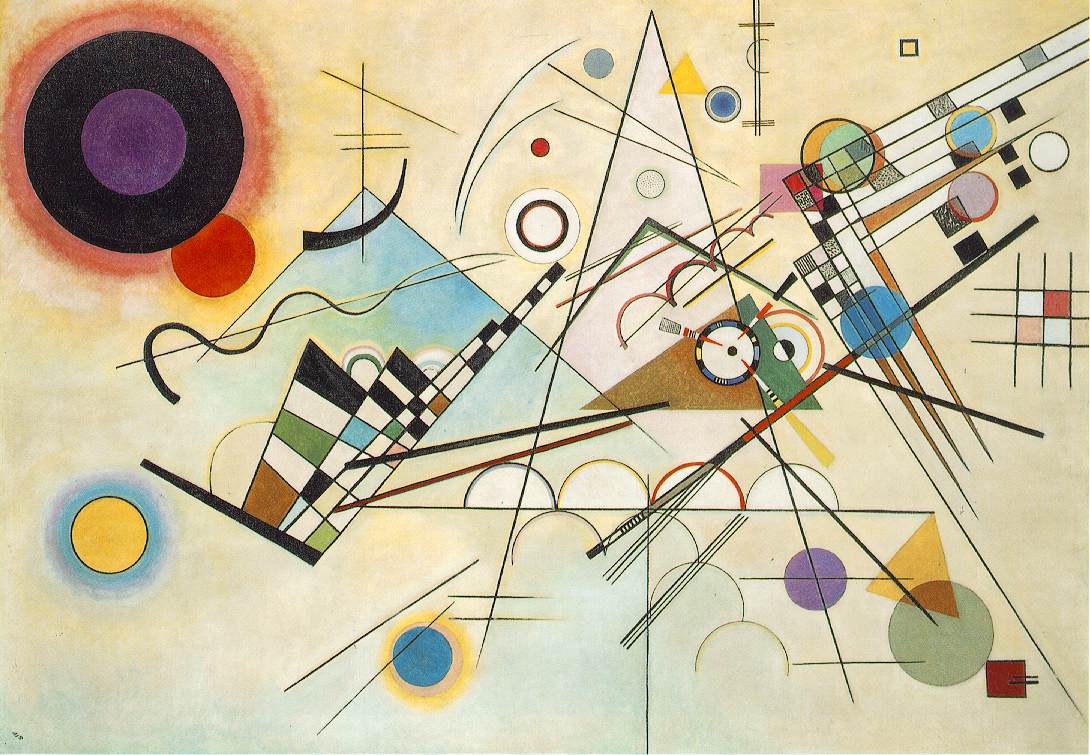 Vasily Kandisky | |
| date | 1913 |
|---|---|
Vasily Kandinsky was among the key pioneers of abstract art, along with the painters such as Piet Mondrian and Kazimir Malevich. He opened up an important new dimension of visual representation that explores another quality in pictures over and beyond portraying the directly apparent reality of the tangible word. [7]
The Intuition underlying Kandinsky's art has its origins in sources that rise far beyond all European Art Theory. His travels acquainted him with Modern Artists such as Seurat, van Gogh,
Cezanne, Matisse, and Picasso. Yet the works themselves are devoid of any evidence to suggest that his own painting was influenced by the traditional art of that time. [11]
Kandinsky found himself in a controversy to follow tradition and reality. The reality that impressionists like Monet included in their paintings. Kandinsky had new artistic objectives instead of "copying in paint". He sought to capture and represent in his painting a reality behind the visible world. The whole musicality of this paintings becomes evident in the use of the brush, the rhythm of the paint application, the intensity of the colors chosen, and the dimensions of the shapes and color fields were chosen. [7]
Guide to Avantgardists in London
Artists of the Past
National Gallery
Tate Modern
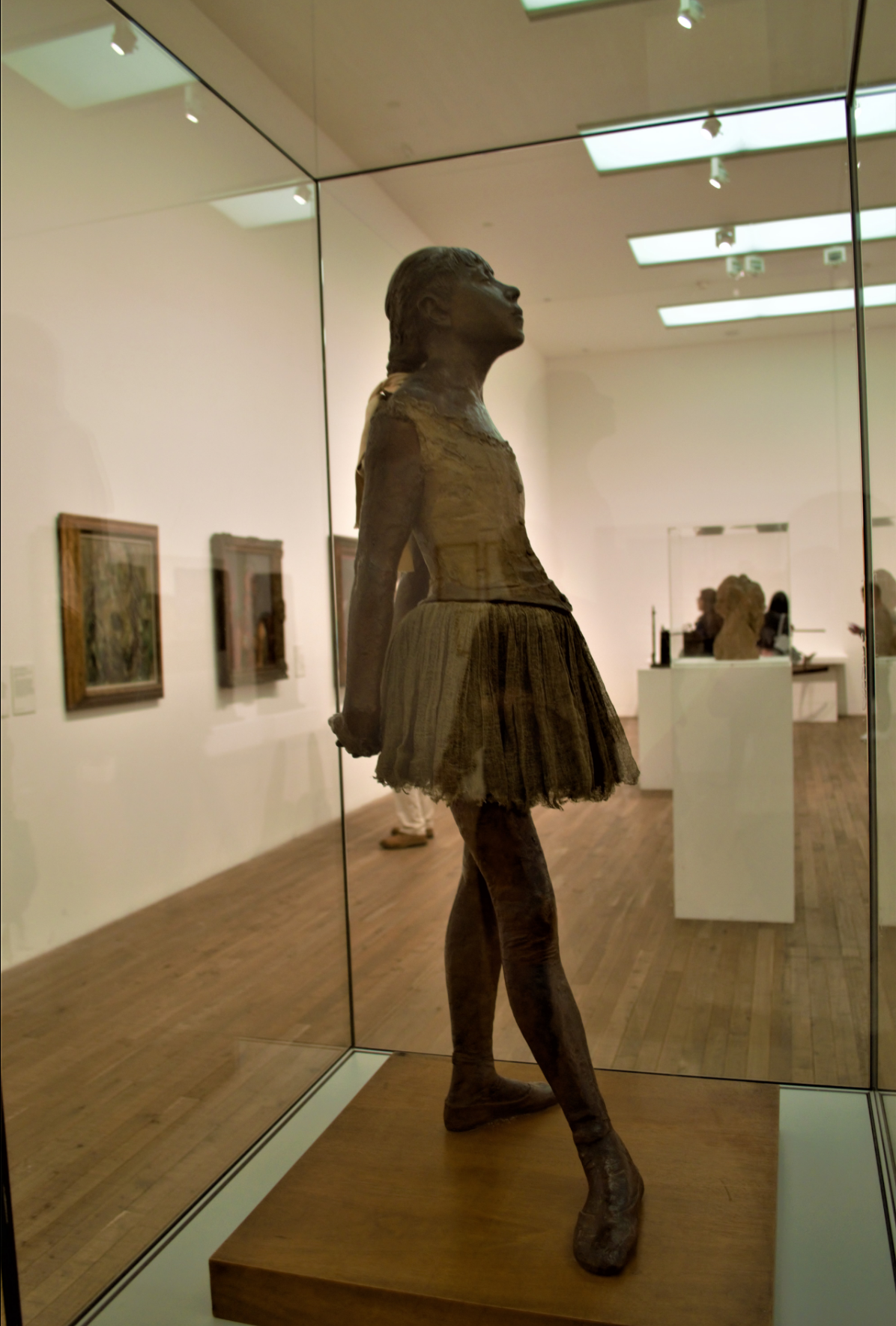 1880–1 | |
| Display Room | Studio Practice (Room 2) |
|---|---|
Little Dancer Aged Fourteen
Degas
This sculpture was created by Degas. The model for this sculpture was a ballet student. Degas first made a reddish-brown wax sculpture of her in the nude. Then, aiming for a naturalistic effect, he dressed it in clothing made of real fabrics. When the wax sculpture was first exhibited, contemporaries were shocked by the unprecedented realism of the piece. But they were also moved by the work’s representation of the pain and stress of ballet training endured by a barely adolescent girl. After Degas’ death, his heirs decided to make bronze casts of the wax original.
Innocent though she may look to us today, Degas's Little Dancer Aged Fourteen caused an outcry when she was first exhibited at the 1881 impressionist exhibition in Paris. The figure was described variously as 'repulsive' and 'a threat to society'. Critics and the public were upset by the realism of the work but also because Degas had represented a provocative modern subject ... dancers were considered part of the seamier side of entertainment and little more than prostitutes.[12]
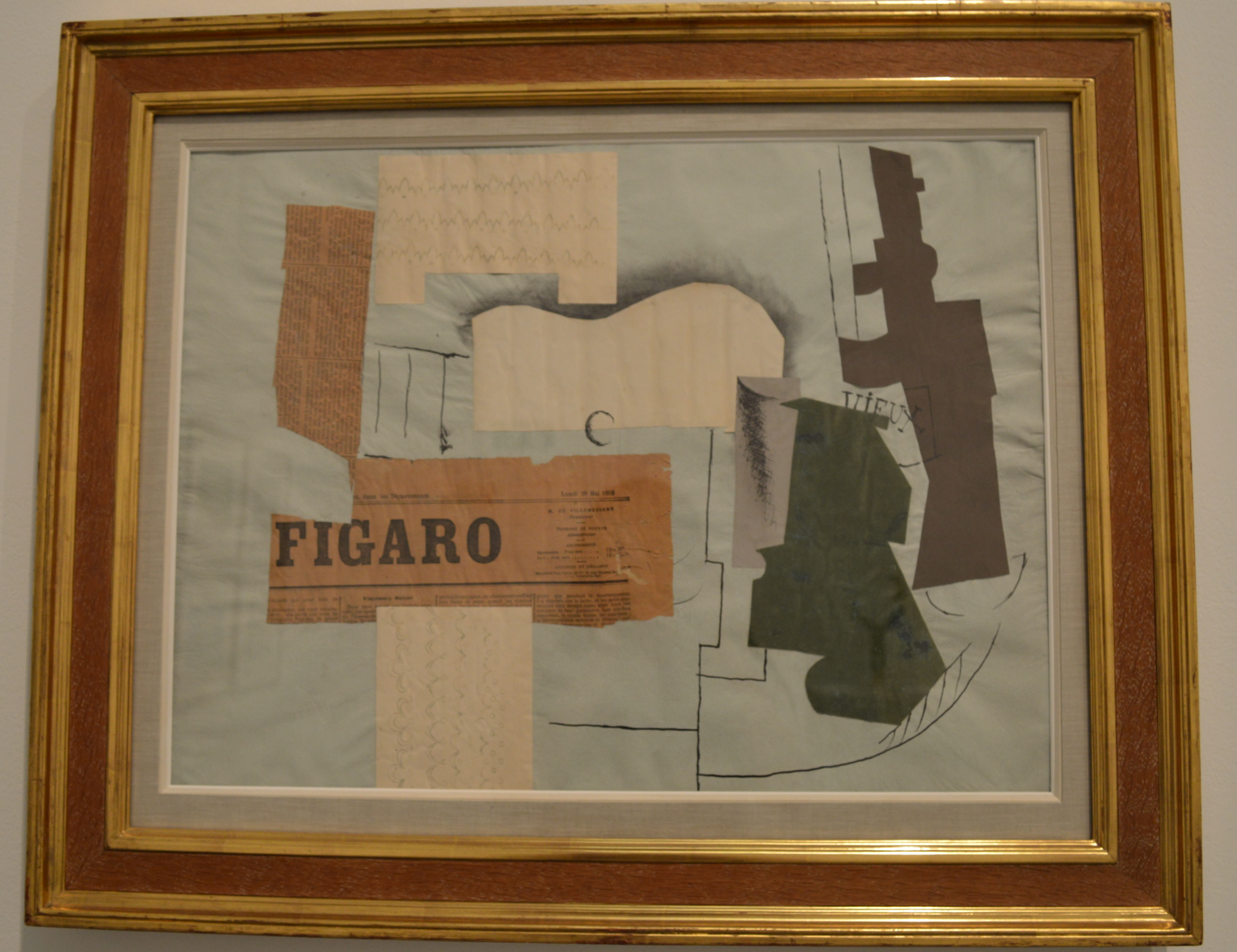 1913 | |
| Display Room | Collage (Room 2) |
|---|---|
Bottle of Vieux Marc, Glass, Guitar and Newspaper
Pablo Picasso
Bottle of Vieux Marc, Glass, Guitar and Newspaper is a small papier collé by Pablo Picasso, produced in 1913. It depicts a series of objects and paper fragments clustered on a table, the oval edge of which has been loosely drawn in the lower right of the composition. The abstracted forms of a guitar, glass, and bottle of the wine cut from white, gray and black coloured papers are juxtaposed with drawn lines indicating other elements of each object’s shape. The word ‘Vieux’, handwritten on the bottle’s neck, is partly obscured by and overlaps, the black forms. Two pieces cut from the same newspaper Le Figaro – including the masthead – are posted at right-angles towards the center. Fragments of two embroidery transfer motifs extend the arrangement towards the edges of the paper. The objects are shown from several perspectives: while the guitar and table appear to be seen from above; the bottle and glass are shown from the side. The light blue support is faded and its edges are irregular. [13]
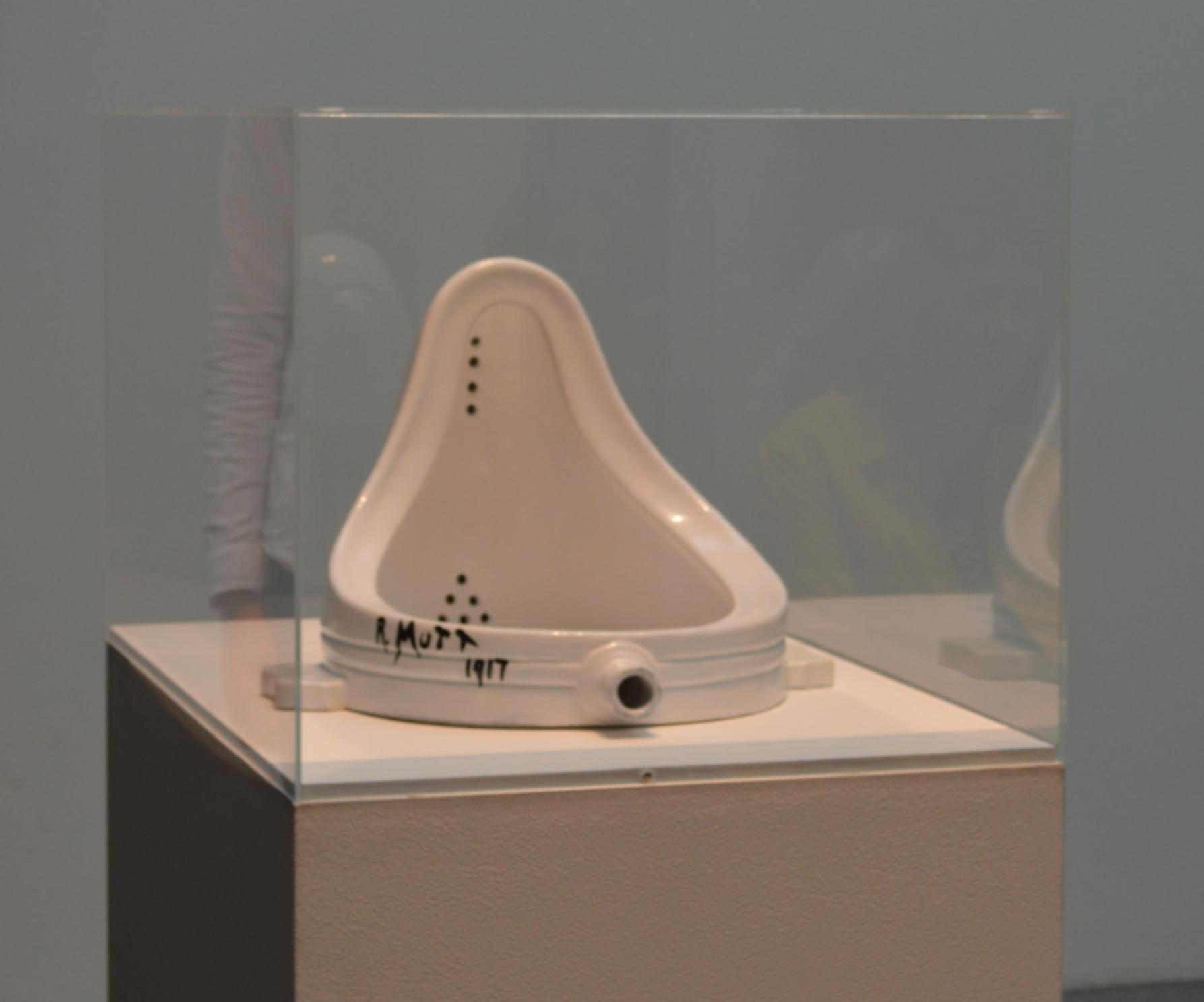 1917, replica 1964 | |
| Display Room | Explore Materials and Objects (Room 4) |
|---|---|
Fountain
Duchamp
"Fountain" is one of Duchamp’s most famous works and is widely seen as an icon of twentieth-century art. The original, which is lost, consisted of a standard urinal, usually presented on its back for exhibition purposes rather than upright, and was signed and dated ‘R. Mutt 1917’. Tate’s work is a 1964 replica and is made from glazed earthenware painted to resemble the original porcelain. The signature is reproduced in black paint. Fountain has been seen as a quintessential example, along with Duchamp’s Bottle Rack 1914, of what he called a ‘readymade’, an ordinary manufactured object designated by the artist as a work of art (and, in Duchamp’s case, interpreted in some way).
Equivalent VIII
1966
Carl Andre/VAGA, New York and DACS, London 2017 When Carl Andre’s Equivalent VIII, twenty-seven fire bricks organized in a rectangle, was exhibited at Tate in 1972 outraged public and critics dismissed it as 'a pile of bricks' and cartoons deriding the sculpture appeared in the national media. Andre and other minimalist artists often used impersonal materials (such as bricks or fluorescent lamps) to question the notion that the artwork is a unique creation by a gifted individual and to prevent its commodification. Each of Andre’s Equivalent series consists of a rectangular arrangement of 120 firebricks. Although the shape of each sculpture is different, they all have the same height, mass, and volume, and are, therefore ‘equivalent’ to each other. Andre’s sculptures are often assembled using common industrial materials, which he arranges into a simple geometric pattern. His sculptures are always placed on the floor rather than on plinths. Not simply objects to look at, they become part of the environment, altering the viewer’s relationship to the surrounding space.
Artists from the Present
Serpentine Galleries
Unit London
Conclusion
In this section, provide a summary or recap of your work, as well as potential areas of further inquiry (for yourself, future students, or other researchers).
References
- ↑ Bischoff, U., Lozo, K., Wit, G. D., & Theerlynck, S. (2016). The power of the avant-garde: now and then. Tielt: Lannoo .
- ↑ Brettell, R. R. (2006). Modern art: 1851-1929: capitalism and representation. Oxford: Oxford University Press.
- ↑ Schor, G. (2014). Woman: the feminist avant-garde of the 1970s: Works from the Sammlung Verbund, Vienna. Brussels: Bozar Books.
- ↑ Bürger, P., & Shaw, M. (1984). Theory of the avant-garde. Minneapolis: University of Minnesota Press.
- ↑ Venturi, L. (1941). The Aesthetic Idea of Impressionism. The Journal of Aesthetics and Art Criticism, 1(1), 34-45. doi:10.2307/426742..
- ↑ Francis, H. (1960). Claude Monet Water Lilies. The Bulletin of the Cleveland Museum of Art, 47(8), 192-198.
- ↑ 7.0 7.1 7.2 7.3 7.4 Kandinsky, W., Friedel, H., Hoberg, A., & Benesch, E. (2016). Vasily Kandinsky. Munich: Prestel Verlag..
- ↑ Holzwarth, H. W., Taschen, L., & Elger, D. (2011). Modern art. Köln: Taschen.
- ↑ T. (n.d.). Cubism – Art Term. Retrieved May 16, 2017, from http://www.tate.org.uk/art/art-terms/c/cubism
- ↑ T. (n.d.). Picasso. Retrieved May 18, 2017, fromhttps://www.google.com/culturalinstitute/beta/search?q=Picasso
- ↑ Grohmann, W., & Briod, B. (1930). Vassily Kandinsky: sa vie, son oeuvre. Paris: Flammarion.
- ↑ T. (n.d.). Avant-garde – Art Term. Retrieved May 16, 2017, from http://www.tate.org.uk/art/art-terms/a/avant-garde
- ↑ T. (n.d.). 'Bottle of Vieux Marc, Glass, Guitar and Newspaper', Pablo Picasso, 1913. Retrieved May 16, 2017, from http://www.tate.org.uk/art/artworks/picasso-bottle-of-vieux-marc-glass-guitar-and-newspaper-t00414
